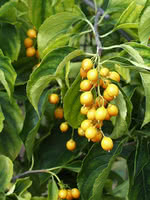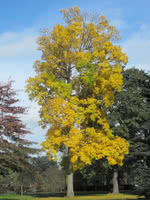Mon-Fri 9am - 5pm Mountain time
American Bittersweet vs Bitternut Hickory
Celastrus scandens
Carya cordiformis
NOT AVAILABLE THIS SEASON - MIGHT RETURN
NOT AVAILABLE THIS SEASON - MIGHT RETURN
American Bittersweet is a deciduous, woody, perennial vine with striking orange to yellow berries that persist into winter. Indigenous to North America, this vine has become so rare it is now considered a protected species.
Excellent for naturalization projects, American Bittersweet attracts birds and other wildlife. Please keep in mind that the plant is toxic to humans and should not be ingested. To ensure the attractive berries are produced, cross-pollination between a male and female plant must occur.
Bitternut Hickory is a large deciduous tree that makes a great shade tree for yards and parks. This tree is native to Eastern North America. Although it produces nuts, they are bitter and inedible. Some consider this wood to be the best flavour for smoking meats.
Plant Bitternut Hickory in it’s forever home. It is difficult to transplant due to its long taproot, and may not survive.
The wood is strong and has historically been used for wheels, ladders, and furniture.
American Bittersweet Quick Facts
Bitternut Hickory Quick Facts
Toxicity: All parts of plant are toxic to humans

